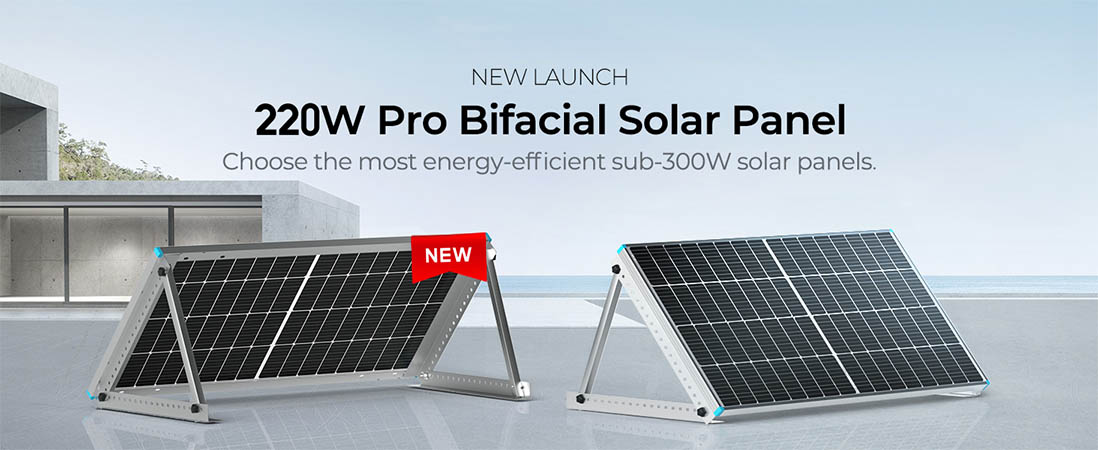What Are Bifacial Solar Panels? | UK Complete Guide
What Are Bifacial Solar Panels? | UK Complete Guide
You may have heard about many different kinds of solar panels available in the UK. One of the rarer and more sought-after types isbifacial solar panels. They’re known as the most efficient, most attractive panels currently available.
Why are bifacial solar panels so efficient,how can you get your hands on them in the UK, and how do bifacial solar panels work? Read on to find out everything you need to know!
In this article, we will discuss:
- What Is A Bifacial Solar Panel?
- Pros And Cons Of Bifacial Solar Panels
- Are Bifacial Solar Panels Worth It?
- Bifacial Solar Panel Costs
- How Are Bifacial Modules Installed?
- Maintaining Your Bifacial Solar Panels
- Bifacial Solar Panel Warranties
- Where Should I Get My Bifacial Solar Panels?
What Is A Bifacial Solar Panel?
Bifacial solar panels are made with the two standard types of cells: Polycrystalline or monocrystalline. In the UK market, the most common makeup of bifacial solar panels is from grouped monocrystalline cells.
Monofacial (or ‘normal’) solar panels use an opaque backsheet, since they don’t care about reflectivity or solar absorption on the other side of the wafers. You’ll often see them mounted on standard brackets, sometimes over an opaque frame or weatherproofing.
Bifacial solar panels, on the other hand, can absorb solar energy on both sides of the panel. In order to facilitate this, they often have reflective backing or mirrored bases so that any missed sunlight is bounced back up at the underside of the solar panel.
As you might imagine, these double-sided solar panels are both more expensive and more efficient. How much more efficient? Field tests have shown that bifacial solar panels have up to 30% more solar absorption. But that’s in desert conditions, for the most part, where ambient reflectivity is high. In the UK, you can expect a gain of between 8% and 11% over normal solar panels if optimally installed.
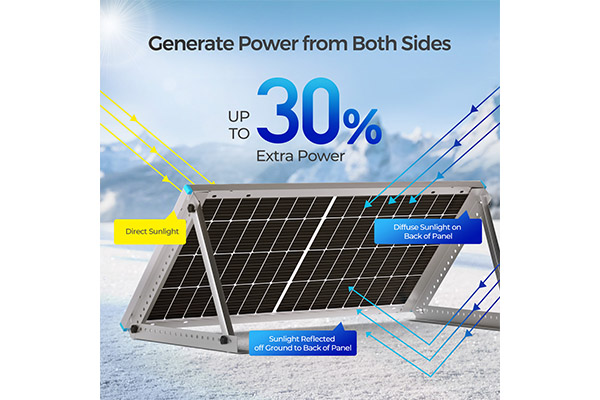
Bifacial solar panels have a completely different look as well. The frame is often skeletal, holding panes of glass that sandwich all of the solar cells in place. That transparency around the edges means that there’s no metal frame sucking up any of the light as heat or throwing shadows. As a result, bifacial solar panels have a low profile, and have one of the best aesthetic looks on the market.
Pros And Cons Of Bifacial Solar Panels
As with any specialist product, bifacial solar panels have a place in the market because they fill a gap that other products cannot. But the benefits that they have come with certain costs. So let’s have a look at the pros and cons of bifacial solar panels in the hopes that you’ll be able to determine if they’re the right fit for you:
Benefits of bifacial solar panels
● Best Looking Solar Panels: Bifacial solar panels are low profile, can be frameless, and have a roof footprint that is unique. If you’re worried about how the look of your solar panels will impact things like resale value or rental attractiveness, these are the panels for you.
● Most Efficient Solar Panels: If you want the most efficient photovoltaic generation on the market, bifacial solar panels are for you. With a typical additional yield in the UK of around 10%, you get that little extra bump in energy production.
● Perfect For Tight Roof Space: Both of the first two benefits, minimal framing and high efficiency, mean that bifacial solar panels are the only real choice if you have very little roof space. You need to maximise every available square metre of space, which is exactly what this product was designed to do.
● Minimal Or No Grounding Required: If attaching the frame of a metal solar panel to common ground is going to be an issue, bifacial solar panels have your back. Models with no metal frames mean that panel grounding is not required. Grounding of the electrical system itself will be handled separately.
● Better In The Snow: One hot feature (pun intended) of bifacial solar panels is accelerated snow melting. This occurs because the bottom panel isn’t impacted by snowfall. The reflected sunlight heats up the bottom face of the panel quickly, which spreads through the thin separation to the top layer. It’s an amazing perk for an already impressive piece of technology.
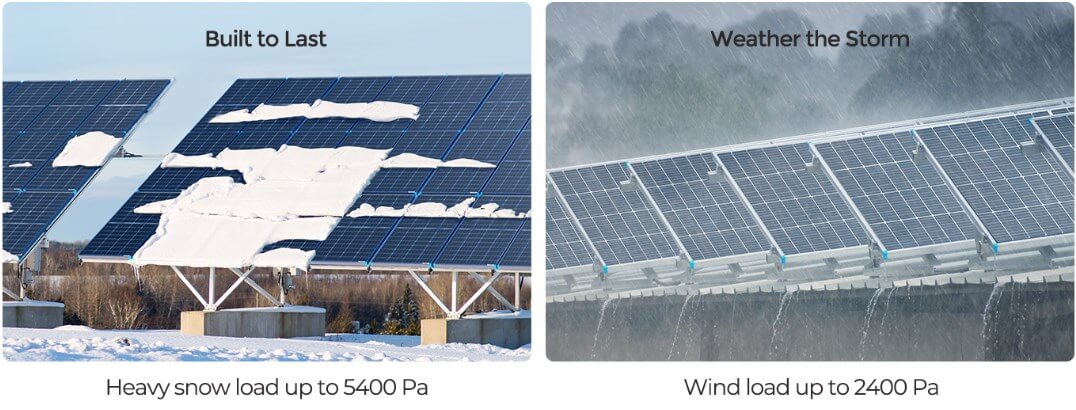
Disadvantages of bifacial solar panels
● Expense: Because they use monocrystalline cells and because they require more solar collectors and a special frameless construction with high reflectivity, bifacial solar panels are some of the most expensive options on the market. If you have a ton of usable south-facing roof space, or if you’re looking for ‘cheap and cheerful’, bifacial solar panels are not for you.
● Installation Complexity: Compared to normal solar panels, bifacial solar panels require a lot more expertise and planning. The installer needs to properly set up maximum reflectivity, minimise shadow, and fine-tune the angle of operation. It’s not as simple as monofacial panel installation.
The pros and cons of bifacial solar panels can be summed up simply: Better, but pricier.
Are Bifacial Solar Panels Worth It?
As with any complex subject, you might not like this answer, but… it depends.
Listen, if you want the very best, lowest maintenance solar panels on the market, then bifacial solar panels are for you. The only better panels are still in R&D testing. Perovskite solar cells are amazing, ultra-thin, next-generation photovoltaics… with a fraction of the lifespan and reliability of commercial solar cells. They need another four or five years to hit a reliable sweet spot. Until then, bifacial solar panels will remain the best.
If your area sees a lot of snow, there’s a solid argument for bifacial solar panels, particularly if you aren’t always available to (gently and safely) brush snow off of your solar panels. You can let the reflected energy hit the rear panel, heat up, and do the work for you.
And, of course, if you have very limited south-facing roof space, you probably don’t want to waste it on normal solar panels unless absolutely necessary. You’ll want to pay a little more to maximise the opportunity (and space) cost that has been thrust upon you. Just make sure that if you have two horizontal rows, you don’t allow the shade from the first to intrude on the reflectivity below the second.
Finally, for high-end units where style is everything, traditional solar panels don’t cut the mustard. Bifacial solar panels are, frankly, beautiful. They look futuristic, all glass and embedded components with no gaudy metal frames. They’re most likely to have a more positive impact on resale value than bulky-framed alternatives.
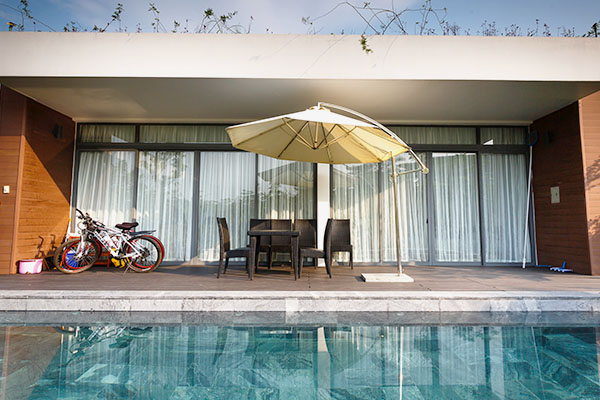
For everyone else, this decision is a matter of personal choice. If south-facing roof space is a non-issue, and you don’t care about the aesthetics, you get a better bang for the buck with even more monofacial monocrystalline panels. The price difference between nine bifacial solar panels and ten monofacial panels is noticeable, and both arrays will produce the same amount of power. So unless the look of the traditional panels turns your stomach, or you have some kind of homeowners association rules that demand low-profile roof attachments, bifacial solar panels are simply a personal choice rather than an economic necessity.
Bifacial Solar Panel Costs
Generally speaking, expect to pay around 20% more for bifacial solar panels when compared to the equivalent monofacial solar panel. Similarly, expect to pay at least an extra 10% installation cost when compared to standard panels. Some of that can be recouped via local or national grants.
The reason for the extra costs should be clear if you’ve read the prior sections. Construction on bifacial solar panels involves adding a second layer of solar cells and a reflector. Installation involves extra alignment and preparation so thatthe underside of the panel is functioning properly.
As discussed, if you’re on a tight budget and roof space isn’t a limiting factor, you can opt for the cheaper monofacial solar panels. It’s a ‘get what you pay for’ situation.
How Are Bifacial Modules Installed?
Bifacial solar panel installation methods depend on the type of panel you’re buying and whether or not you’re using a sun-tracking mechanism. For purposes of this article, we’ll assume no tracking mechanism and a frameless bifacial solar panel.
Firstly, in the UK, you’ll want to mount your panel on a south-facing roof. More height generally means less ambient shadow and more reflectivity for the rear solar cells.
Then install the base reflectivity layer if you wish to have that option. This is put down before the rails, which means you need to be able to drill through it. So solar reflective paint or reflective mylar is far more appropriate than something like a mirror.
Next, you secure the rails to the roof, as per your kit’s instruction manual. Using a torque wrench, tighten the fixture, but do not overtighten. Mounting rails should limit shade as much as possible to maximise reflectivity onto the back of the bifacial module.
If your panels use a clamping mechanism, the clamp positions will be marked in the manual’s diagram. Don’t deviate from the predetermined clamp locations. The structural integrity and stability of the bifacial panels depend on the proper location of the clamps. Generally speaking, you’ll be using four points of contact on two opposite sides of the panel.
It’s particularly important to leave elevation gaps if installing multiple horizontal rows of bifacial solar panels. Unlike traditional panels, you want some extra room to allow for sunlight reflection.
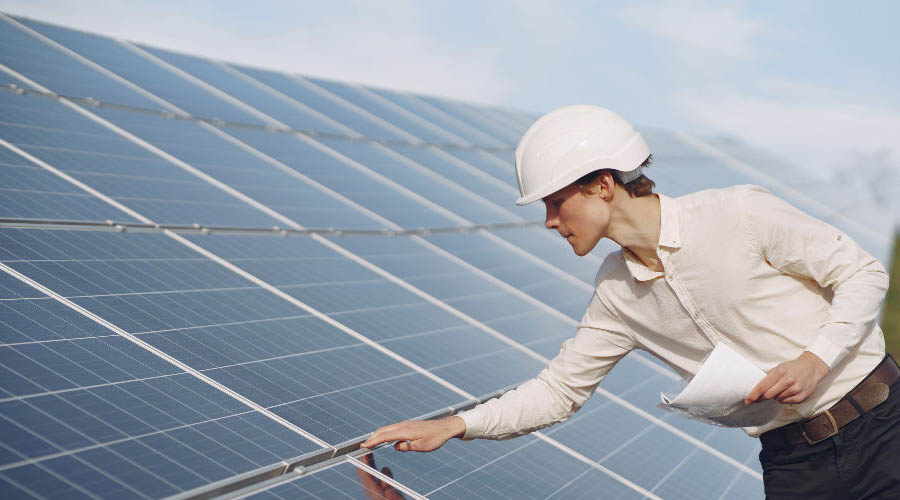
Maintaining Your Bifacial Solar Panels
Once installed, remember to perform normal maintenance on the panels! You’re paying for extra output, so make sure you're getting the most out of your investment.
At least once a month, visually inspect your solar panels. It doesn’t matter if you’ve seen a drop in solar production. A lot of things that wouldn’t impact normal solar panels will have a heavy impact on bifacial solar panels: Obstructions, branches, moss, bird nests, and animal burrows.
You may have an abundance of bird waste on your panels. You want to wait until the late afternoon when the sun is indirect, and the solar panels are cooler. Then use a bucket of soapy water and a soft bristle brush to wash off the bird guano. Hose the bifacial solar panels off with fresh water.
It’s important to stress the time of day once again: You shouldn’t spray water on your solar panels during peak solar hours or if you’re experiencing freezing temperatures. The rapid change in heat level will crack the panels. This applies to cleaning off dust, ash, or other particulates as well.
As noted, winter might bring extra thick snowfall. The bifacial solar panels are particularly good at heating things up enough to melt the snow. But if there’s an unbearably thick layer of snow that needs to be cleared away, use a soft, bristled brush to clear the panels. Do not heat or boil water to melt the snow or ice on solar panels, and do not use de-icer, salt, or chemicals. You will likely crack the glass panels if you use these methods.
During the fall, make sure that your double-sided solar panels are not covered in pine needles, leaves, or twigs. The additional shade will result in a drop in production.
Bifacial Solar Panel Warranties
The warranties on bifacialpanels are some of the best in the business.
Typically, there will be a 5-year warranty on 95% of the panel’s listed output, a 10-year warranty on 90% output capability, and a 25-year warranty on 80% output capability.
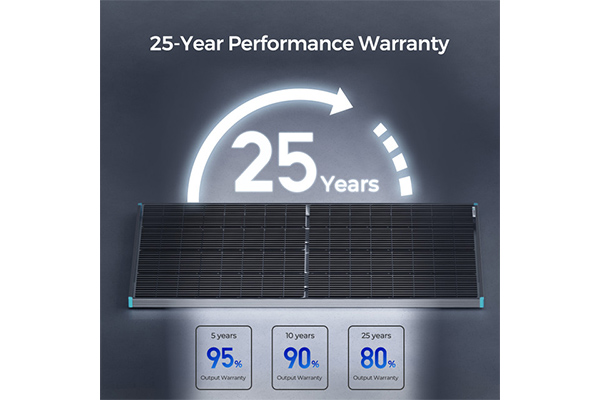
This reflects the superior craftsmanship and materials used in the construction of these high-end panels. If you see panels with far shorter warranty periods, it’s possible that they’re either used or refurbished. You should get a deep discount on such products, as the lifespan and fail rate on them are dramatically impacted.
Where Should I Get My Bifacial Solar Panels?
Renogy in the UK is about to start offering the latest generation of bifacial solar panels to their clients! Stay tuned!
Renogy is one of the leading providers of solar power generation gear in the UK. Renogy sells products ranging from solar panels, to battery storage for solar energy, to entire solar kits that are suitable for home and campervan use.
If you have any questions, or would like to be informed as soon as the new bifacial solar panels go live on the site, feel free to contact Renogy today.
